THE FALL OF THE SOVIET UNION
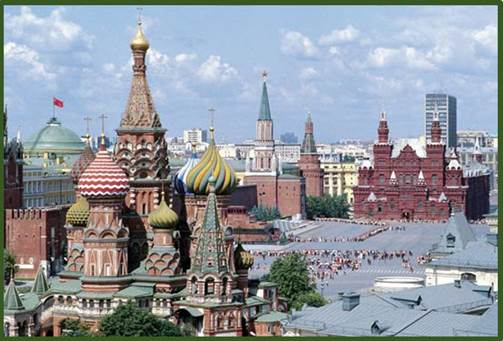
Moscow's Red Square
Unit
Overview
Almost
no one born in the 1950s could have envisioned a world without the Soviet
Union.† It had challenged the West and
its allies politically, militarily and philosophically for over forty
years.† However, the Soviets could not
match the production levels of the United States and Western Europe.† Attempts at reform only encouraged a spirit
of nationalism and increased revolutions inside and outside Soviet
borders.† Letís see how it all happened.
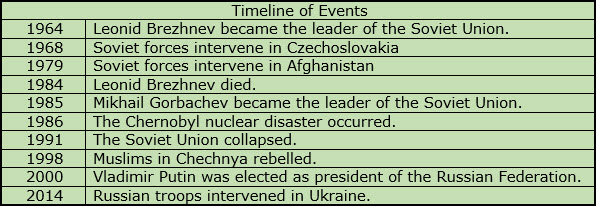
STOP:† Answer Section A Questions
Life
in a Command Economy
Following
World War II, the Soviet Union faced the challenge of rebuilding its devastated
industries.† Unlike the West, the Soviets
operated under a command economy.† The government decided what to produce, how
much to produce and for whom to produce it.†
In the communist system, this replaced the law of supply and demand.†
By the 1950s, the manufacture of steel and heavy equipment represented
the nationís top priorities.† The
government also poured the countryís financial resources into scientific
research and technical advancement.† The
Soviets wanted to prove that their system was superior to that of the United
States.†
Although
unemployment was practically nonexistent and housing costs were low, the Soviet
economy was plagued by serious problems.†
The practice of organizing agricultural production through large units
called collective farms failed to
meet demand.† As a result, the Soviet
Union was forced to import grain to feed its people.† The nationís command economy was not able to
keep pace with the free market economies of the West in the quantity and
quality of its consumer goods.† Soviet
shoppers waited in long lines to buy groceries.†
The selection of clothing was very limited.† Although they had lifetime job security,
workers were only rewarded for meeting production quotas and had little
incentive to improve the quality of their products.
Q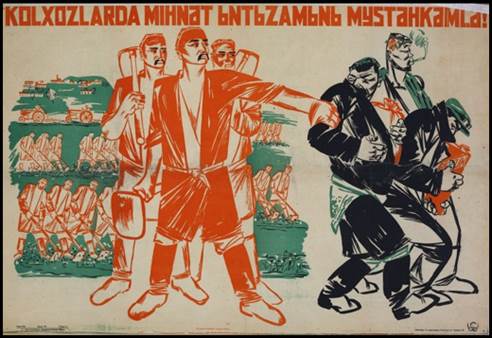
Soviet Poster
Promoting Collective Farming
STOP:† Answer Section B Questions
The
Brezhnev Era
The
Cuban Missile Crisis ended the political career of Nikita Khrushchev and
brought his successor Leonid Brezhnev
to power.† As leader of the Soviet Union
from 1964 until his death in 1982, Brezhnev ordered a massive military buildup
in response to what he believed had been a humiliating defeat in Cuba.† His regime clamped down on anyone who opposed
his policies, including Alexander
Solzhenitsyn, winner of the Nobel Prize in literature.† Critics faced arrest, imprisonment and, in
some cases, exile.† The Soviet Communist Party strictly controlled the media and limited basic civil rights.
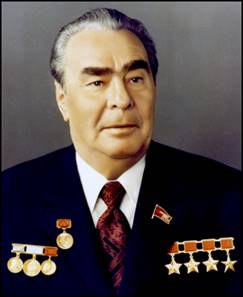
Leonid Brezhnev
Brezhnevís
firm hand extended into Eastern Europe.† In 1968, a group of reformers within the
Czechoslovakian Communist Party won a majority in the countryís legislature and
proposed a series of liberal reforms.†
Because these developments frightened hardline communists, Brezhnev
ordered 500,000 Soviet troops to Czechoslovakia
and effectively intimidated the reformist element.† This resulted in the Brezhnev Doctrine in which the Soviet Union gave itself permission
to intervene militarily in the affairs of any Warsaw Pact nation.††† The
same determination to secure its borders led to the invasion of Afghanistan under Brezhnevís leadership
in 1979.† As part of the Cold War, the
United States and the Soviet Union competed for allies among the developing
nations of Asia and Africa.† These
military exploits further extended the Soviet Unionís thinly stretched
financial status.† Before Brezhnev died,
efforts were underway to improve the countryís economic performance and to
eliminate corruption in the Soviet bureaucracy.†
However, it would up to the next Soviet leader to carry out these
reforms.
STOP:† Answer Section C Questions
Gorbachev
and the Reform Movement
In
1985, Mikhail Gorbachev, known for
his intelligence, personality and determination, became the leader of the
Soviet Union.† Although he was a firm
believer in communism, Gorbachev realized that certain aspects of the system
were failing.† Reform was essential if
the state was going to be saved.† He
recognized the importance of better relations with the West and the economic
advantage of ending the wasteful arms race with the United States.† His first series of reforms, known as perestroika, was designed to
restructure the economy by making room for some private enterprise and relaxing
government price controls.† He thought
that this would enable the Soviet companies to produce more consumer goods of
better quality.
Under
the new system, factory managers made decisions that had formerly been in the
hands of government planners.† To address
the issue of inadequate food supplies, farmers were allotted more land and were
permitted to sell the crop on the free market.†
Gorbachev and his associates knew that these reforms would create short-term
havoc but hoped that the measures would result in long-term success.† As expected, Gorbachevís changes created an
economic upheaval in the Soviet Union.†
Some factories found that they could not survive without government
support, and these closings increased unemployment.† Prices rose, shortages increased and
criticism intensified.† Old-school
communists insisted that the reforms had gone too far, while politicians like Boris Yeltsin claimed that they had not
gone far enough.
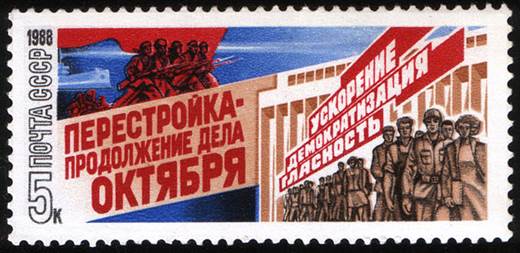
A Soviet Stamp Commemorating Perestroika
The
economic restructuring was followed by glasnost,
a policy which encouraged open, public discussions and eased the rules of
censorship for the media.† This sparked a
spirit of nationalism in non-Russian minorities across the Soviet empire. Estonia, Latvia and Lithuania had once
been republics but were seized by Russia in 1940.† They became fully independent in 1991.† After Gorbachev renounced the Brezhnev
Doctrine, the peaceful reunification of Germany and the liberation of Eastern
Europe from Soviet dominance soon followed.†
In other foreign policy matters, Gorbachev ordered the removal of all
Soviet forces from Afghanistan.† He also negotiated
an agreement with the United States to scale back the numbers of nuclear
weapons held by both countries.†
These
changes deepened the resentment of traditional communists.† Therefore, they planned to remove Gorbachev
from office through a coup.† Although this maneuver was unsuccessful, it
weakened the leaderís already precarious position.† Boris
Yeltsin, Gorbachevís long-time rival, and his political allies declared
Russiaís independence. They withdrew Russia from the Soviet Union and announced
the formation of the Russian Federation.† When other republics quickly followed,
Gorbachev resigned as president, and the Soviet Union ended its existence on
December 25, 1991.† With the collapse of
the Soviet Union, the United States emerged as the worldís lone superpower.
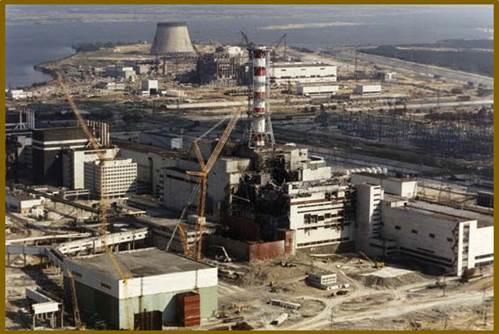
Chernobyl
Nuclear Reactor Following the Disaster:†
October, 1986
Along
with major political change and economic turmoil, the Soviet Union also
experienced a major environmental disaster in 1986.† On April 26, a full-scale meltdown took place
at Reactor No. 4 at the Chernobyl
nuclear plant located near Prypyat,
a city in the Russian republic of Ukraine.†
The meltdown ignited an explosion several times larger than those
unleashed at Hiroshima and Nagasaki.† It
also released a huge number of radioactive particles into the air.† Thirty-two people died initially, and dozens
of others were sickened due to exposure.†
Over 200,000 people living within twenty miles of the facility had to be
evacuated.† Fallout reached several
European nations.† Ukraine, Belarus and
Russia have reported unusually high rates of thyroid cancer as scientists
continue to monitor the effects of the contamination.
STOP:† Answer Section D Questions
The
Russian Republic
Russian
president Boris Yeltsin believed that change had to be enacted quickly if the
new republic was going to avoid a return to communism.† He began by privatizing more state-run
industries and collective farms.† Once
again, unemployment rose, and prices increased.†
For older Russians who lived on pensions, this was an especially
difficult time.† Some industrialists,
however, prospered under the new system.†
Their success further widened the financial gap between the rich and the
poor.† The countryís fiscal problems were
compounded by the fact that the Russians had little experience with republican
government.† For centuries, Russian
political life had first been dominated by autocratic tsars and then by the
communist party. The new political parties had no background in democratic
traditions.† Russia did not have an
established court system and legal code to deal adequately with corruption and
crime.† This became a serious problem as
gang activity and crime flourished.
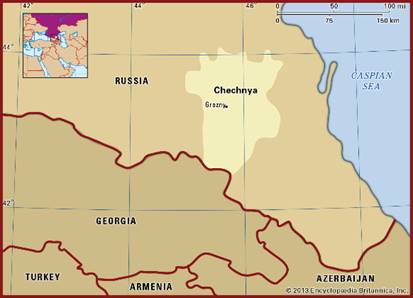
Map Showing the Location of Chechnya
†
Conditions
went from bad to worse in 1998 when Russia defaulted on much of its foreign
debt.† This failure to meet loan payments
caused the value of the ruble, the
countryís main unit of currency, to collapse.†
As banks and businesses closed, Russians could do little but watch as
their savings evaporated.† Between 1992
and 2001, the Russian economy declined over 30%.† Confidence in the government also plummeted
when Yeltsin failed to solve the crisis.†
This contributed to the increasing demands by minority groups within
Russia for independence.† Violence
erupted in Russiaís Chechnya region
in 1998 when Muslims, who had lived in this area of the Caucasus Mountains for
centuries, rebelled.† This was
accompanied by several terrorist attacks on Moscow, the Russian capital.†
Boris Yeltsin resigned under pressure in 1999.† Vladimir
Putin, once a member of the Soviet secret police, was named as acting
president.† In the following year, Putin
was elected president through the first free elections in Russian history.
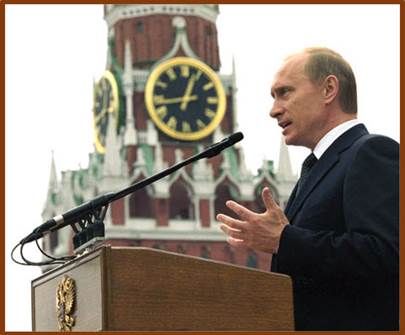
Vladimir Putin Speaking in Moscow's Red Squire
During
his years in office, Putin became more authoritarian in his approach, and his
leadership has some similarities to communist party rule.† Since he took office, restrictions have been
placed on the press, and several industries have been nationalized.† He was also responsible for a brutal campaign
against the separatist movement in
Chechnya.† Defining the rebellion as part
of the global war on terror, Putin ordered Russian troops to destroy all Chechen
opposition to Russian rule.† The conflict
resulted in the deaths of over 200,000 civilians, the destruction of the
regionís infrastructure and the flight of thousands of refugees.† The Chechens, however, continued their
resistance.† Ukraine also became a
hotspot in 2014 when Putin intervened militarily on behalf of Russian
separatists.†
Putin,
who has served multiple terms as both president and prime minister, has been
criticized nationally and internationally for his autocratic decisions.† Meanwhile, Russia still houses the one of the
worldís largest stockpile of nuclear weapons.†
This demands that the rest of the world deal with the Russians on a
diplomatic level and through collaboration.†
The collapse of the Soviet Union triggered a worldwide fear that nuclear
technology, toxic chemicals and biological agents would be stolen from poorly
guarded Soviet labs and sold to the highest bidders.† Recognizing the potential threat this posed,
treaties and agreements have been negotiated to limit the production, use and
possession of these weapons.
STOP:† Answer Section E Questions
What
Does It All Mean?
The
fall of the Soviet Union brought an abrupt end to the Cold War and eliminated
one of the two superpowers.† For the
United States, the victory was short-lived as the old enemy was soon replaced
with a war on terror.† For the small
nations of Eastern Europe, it seemed nothing short of a miracle.† After World War I, these countries gained
their independence only to be overrun by the Germans during World War II.† Soviet domination quickly followed.† Some nations enjoyed a peaceful transition;
others would experience violence and upheaval.
Additional Resources and Activities
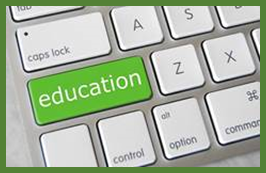
A Short History of the Soviet Union Article and Quiz